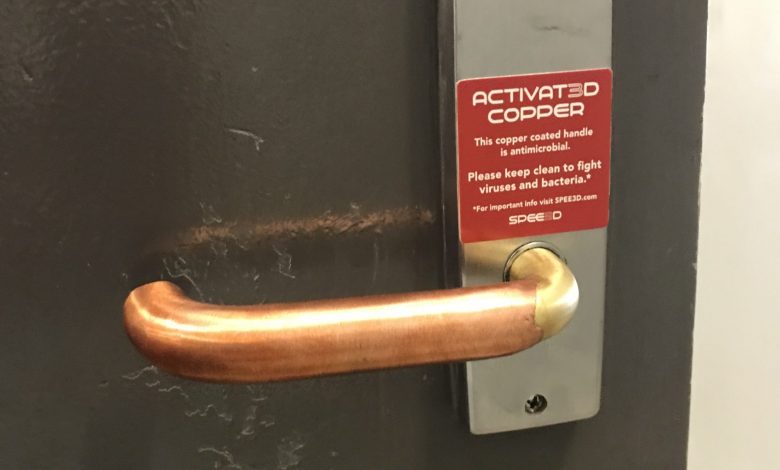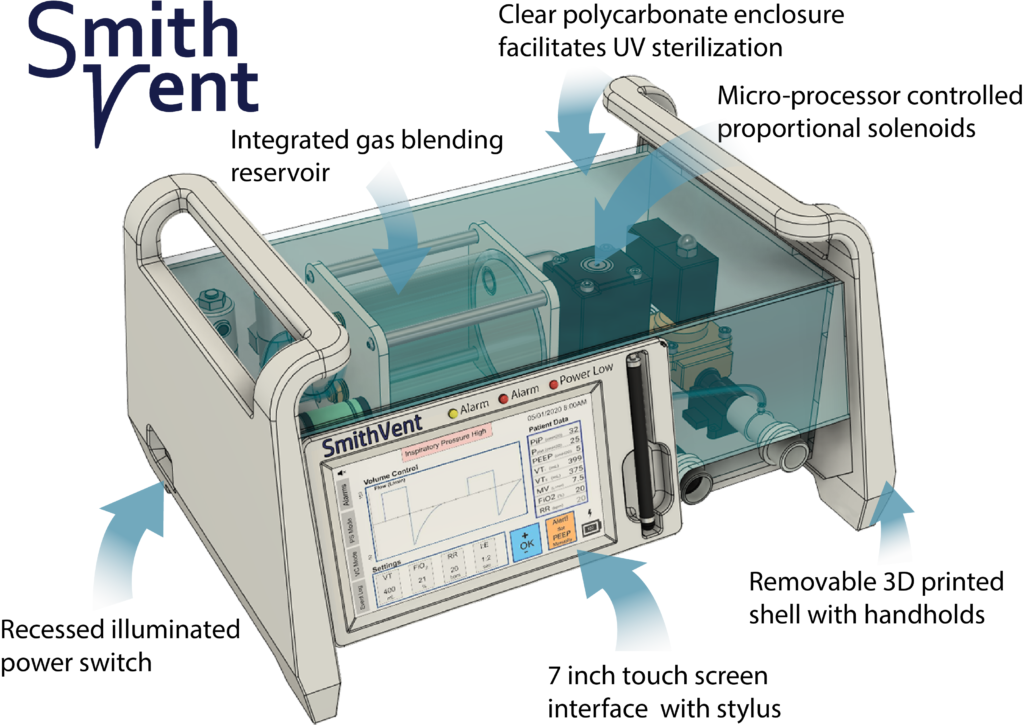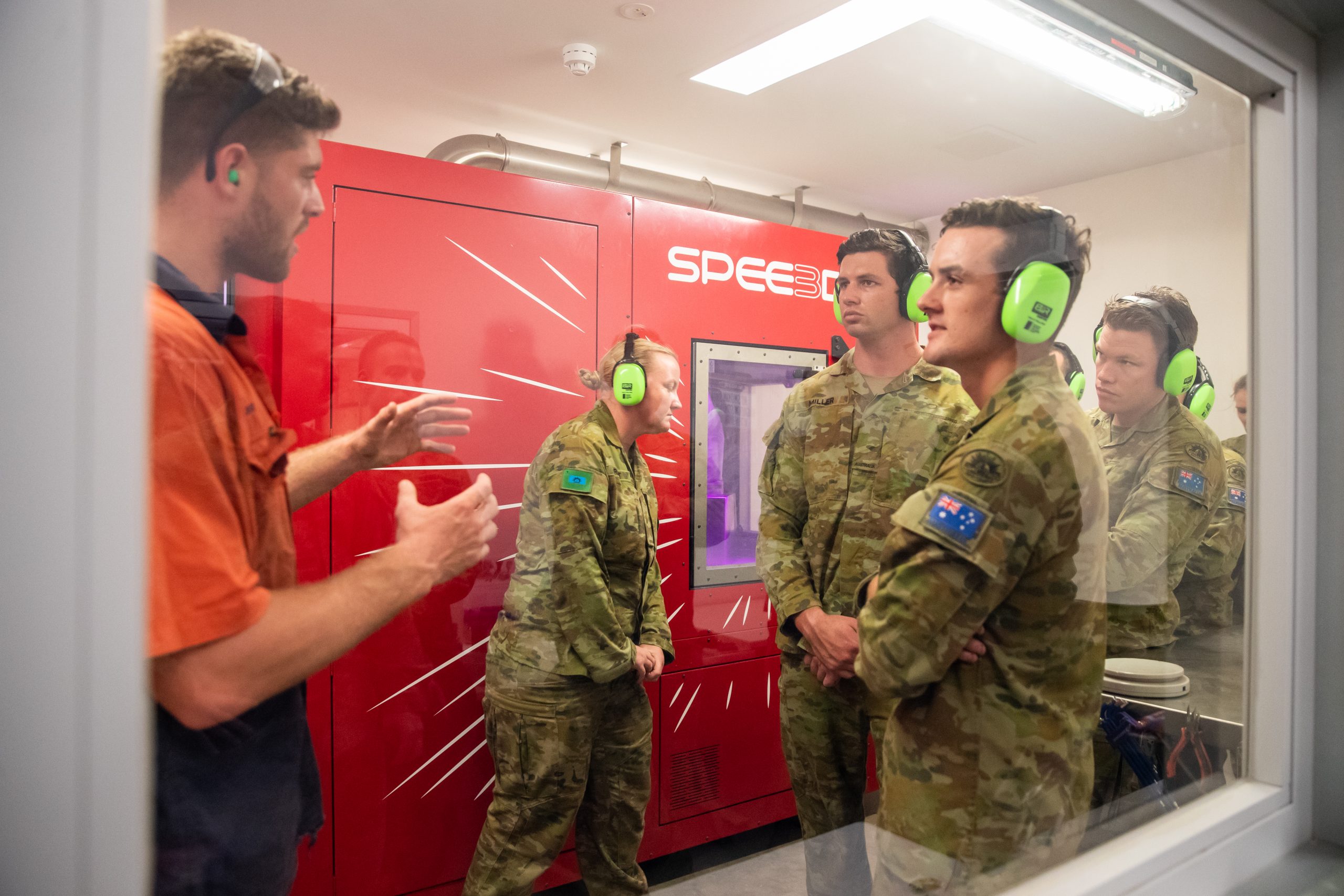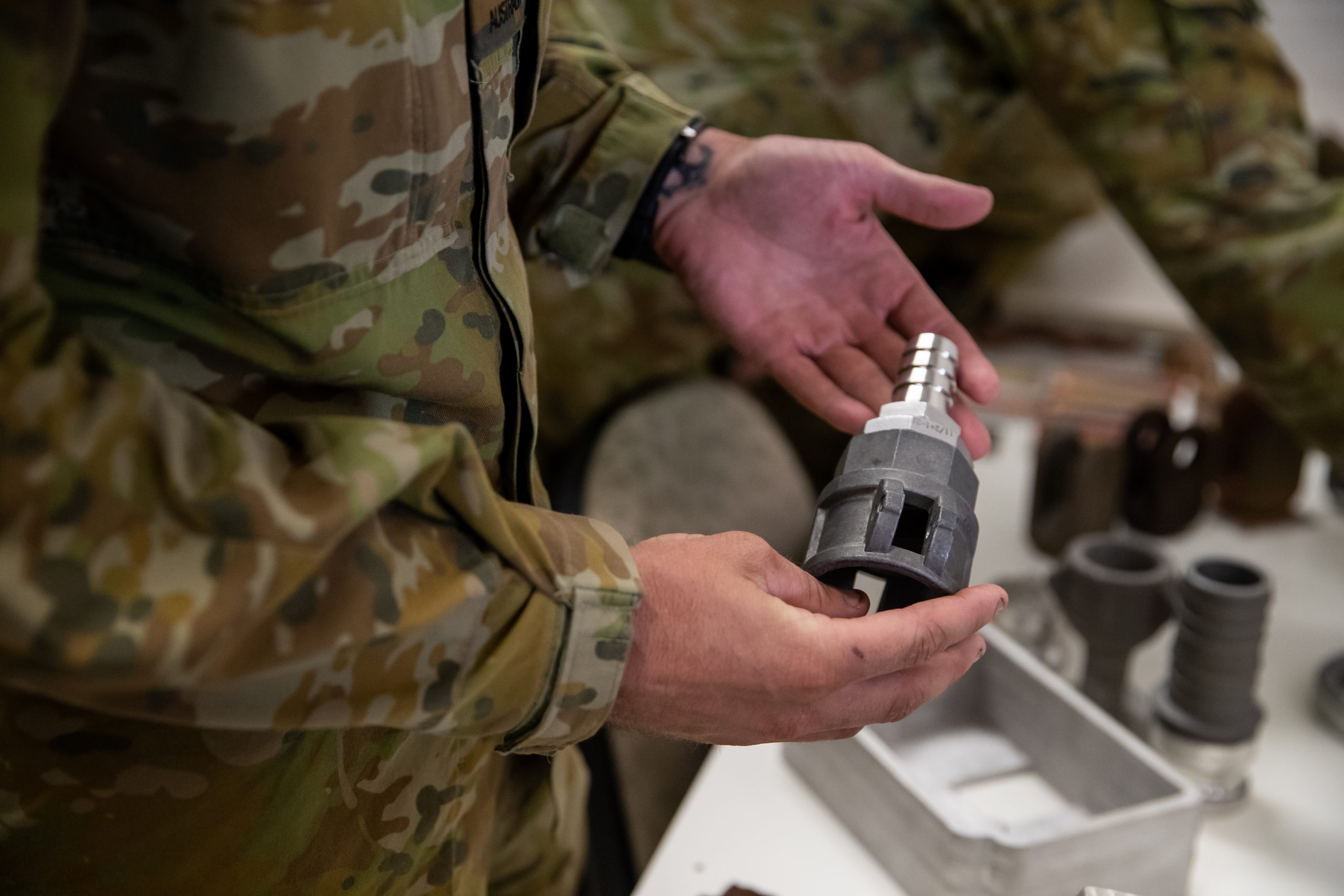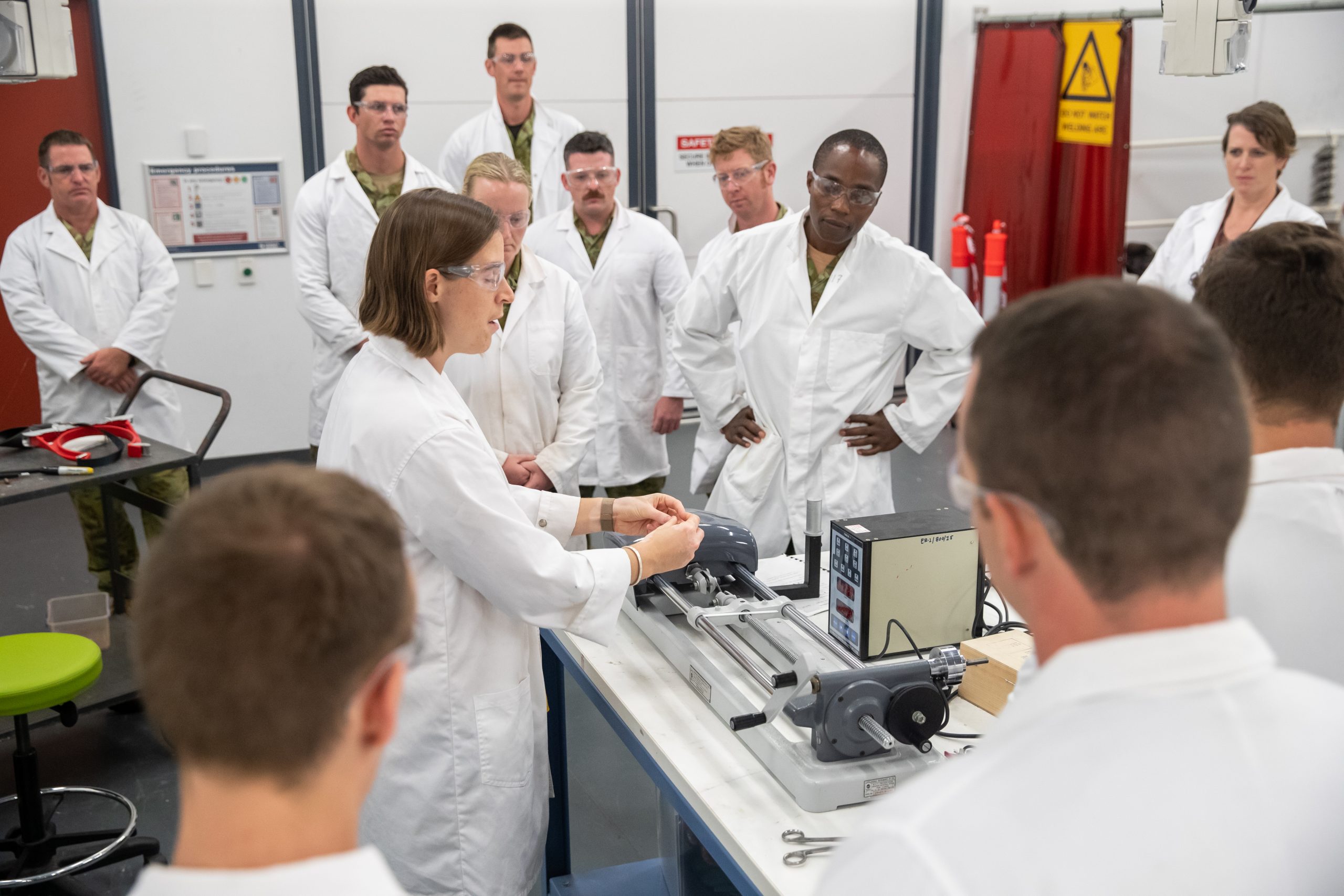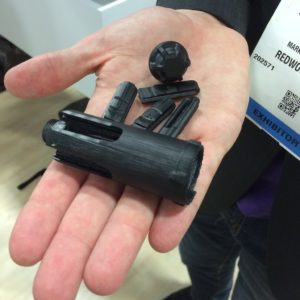3D printing industry news sliced: Stratasys, Sciaky, FIT AG, Essentium, SPEE3D, VELO3D, Sygnis and more
Australian Army successfully conducts field test of SPEE3D metal 3D printer
3D Printing and COVID-19, May 8, 2020 Update: HP, Rolls Royce, SPEE3D, Rize, Dassault & Stratasys
Companies, organizations and individuals continue to attempt to lend support to the COVID-19 pandemic supply effort. We will be providing regular updates about these initiatives where necessary in an attempt to ensure that the 3D printing community is aware of what is being done, what can be done and what shouldn’t be done to provide coronavirus aid.
HP has provided some interesting details to 3D Printing Media Network, about the extent to which it has been involved in manufacturing medical supplies. It has produced over a million parts for COVID-19 protection with Multi Jet Fusion, including over 200,000 face shields for Sant Pau Hospital in Barcelona. To do so, it has partnered with such large companies as Lamborghini, Volkswagen-Seat, Ferrari, Skoda. Among the parts printed is one that connects a continuous positive airway pressure (CPAP) device to an oxygen mask, as well as one that connects to a diving mask, various face masks and parts for the Leitat1 emergency ventilator. For the U.K. alone, HP and its partners have made more than 50,000 face shields, mask adjustors and hands-free door openers.
SPEE3D has begun deploying its antimicrobial ACTIVAT3D copper printed devices, starting with the Northern Territory Department of Trade, Business and Innovation which is replacing door handles with ACTIVAT3D copper handles. According to SPEE3D and its testing partner, these copper parts are able to kill 96% of SARS-CoV-2 virus within two hours of contact, compared to stainless steel which had no impact.
RIZE is also producing face shields for workers at Cardiovascular Medicine, PC, in Davenport IA and Moline IL, emphasizing the US Pharmacopeia Class VI certification its RIZIUM ONE filament has achieved. This is considered the highest level of biocompatibility, such that it has no adverse impact on the wearer’s skin after long periods of use. The company also claims that this material does not trap moisture that can contain the virus, like other common 3D printing plastics, such as ABS and nylon.
An Duong, a Rolls-Royce worker making face shields in the U.K. covered in a previous update, is now asking for help. Having donated over 700 masks to National Health Services staff, Duong is hoping for donated filaments and funds, via GoFundMe. In return, he is planning to send one donor, chosen via random name drawing, a printed Jet-M1 models.
Stratasys has reported that over 200 teams have submitted designs for GrabCAD’s CoVent-19 Challenge and that the finalist round has begun, with seven teams selected to build working prototypes of rapidly deployable, minimum viable ventilators. After that, judging will proceed, led by 12 anesthesiology resident physicians from Massachusetts General Hospital. The finalist projects chosen are the following: SmithVent, CORE Vent, InVent Pneumatic Ventilator, RespiraWorks, OP Vent, Lung Evolve, and the Baxter Ventilator. A winner will be selected by the beginning of June, which will see them attempt to bring the device to market with FDA approval.
The Consumer Technology Association (CTA) and other trade groups are attempting to push the United States Trade Representative (USTR) Office to broaden tariff exemptions on products during the pandemic from imported ventilators, oxygen masks and nebulizers to include 3D printers, drones, robots and personal computers that are made in China.
The groups suggest that these technologies are important to managing the COVID-19 outbreak, with the CTA saying in a letter to the USTR Office, “These tariffs are not only a barrier to the entry of necessary products, they are a tax on businesses and consumers that has become ever more harmful as many enter ‘survival mode’.”
Dassault Systemés has published some of the efforts of its Open COVID-19 Community, including the work of Inali, a non-profit in India, that has developed what it suggests is a safe, affordable ventilator in only eight days. It should be noted that the device is of the Ambu bag variety, like the Leitat1, which can be dangerous due to the high incidence of delivering too much air to the patient and leading to aspirating vomit into their airways or lungs and even dying.
As the pandemic continues to grip the world, we will continue to provide regular updates about what the 3D printing community is doing in response. As always, it is important to keep safety in mind, remain critical about the potential marketing and financial interests behind seemingly good humanitarian efforts from businesses, and to do no harm.
The post 3D Printing and COVID-19, May 8, 2020 Update: HP, Rolls Royce, SPEE3D, Rize, Dassault & Stratasys appeared first on 3DPrint.com | The Voice of 3D Printing / Additive Manufacturing.
Australian Army Enters 3D Printing Pilot Program, Partnering with SPEE3D & CDU
3D printing will soon be assisting members of the military in Australia, as a 12-month pilot training program has begun in a $1.5 million partnership with SPEE3D and Charles Darwin University (CDU).
The Australian Minister of Defense Industry, the Hon. Melissa Price MP, has announced that soldiers mostly from 1st Combat Service Support Battalion (1 CSSB) will be training in 3D printing, using the large-format WarpSPEE3D 3D metal printer to be on-site at Darwin’s Robertson Barracks—and then deployed for field use as needed for military exercises by the Australian Army.
SPEE3D CEO Byron Kennedy points out that this is ‘another significant announcement’ for both the military and his company:
“This program with the Australian Army, in parallel with a similar project with the Royal Australian Navy announced in November last year, will enable the Australian Defense Force to grow our sovereign capability and lead the world in the field of additive manufacturing.”
With the new ability to 3D print parts on-demand with innovative metal technology, the goal is for the Australian Army to ‘enhance lines of logistics, ‘according to a recent press release sent to 3DPrint.com.
This trial represents the culmination of a proposal submitted last year, with the mission to overhaul the supply chain for the military. Lieutenant Colonel Kane Wright, Commanding Officer 1 CSSB, explained that this initiative will allow the Army to keep up with ‘the accelerated nature of warfare.’
“This partnership with CDU and SPEE3D shows that we as an army are looking to the future and embracing advanced technologies to speed up our processes,” continued Wright. “At maturity we see it becoming an essential enabler that will redefine how logistics is employed to support our dependencies on the future battlefield.
“This will reduce the requirement to deploy with bulky holdings of multiple repair parts, hence increasing mobility and survivability and reducing time waiting for new parts to create greater resilience in the supply chain.”
The first ten weeks of training are taking place at CDU’s Casuarina Campus, with military personnel trained by researchers skilled in 3D printing, covering:
- Fundamentals of design
- 3D modeling
- 3D printing
- Testing & evaluation of developed parts
“This 3D printing technology has the potential to change the way many industries, including defense, design, manufacture and supply parts,” said CDU Vice-Chancellor and President, Professor Simon Maddocks upon visiting soldiers performing classwork. ““CDU has become a center of excellence in exploring and applying this new technology and we’re pleased to have such eager professional soldiers join us to learn this new skill set.”
The Royal Australian Navy also began a trial program last November—again, with SPEE3D and CDU, streamlining maintenance of their patrol vessels with 3D printed parts.
1 CSSB Fitter Lance Corporal Sean Barton was one of the 20 soldiers who signed on for training:
“This is a very exciting opportunity for me and very different from my regular trade as a Fitter,” Lance Corporal Barton said. “I am looking forward to getting my hands on the software, learning about the design process and being one of the first to learn how to use the technology – it’s pretty cool.”
Numerous governments are using 3D printing today and performing complex research which may allow 3D printing in remote areas, in challenging climates, and much more. What do you think of this news? Let us know your thoughts! Join the discussion of this and other 3D printing topics at 3DPrintBoard.com.
[Source / Images: SPEE3D]
The post Australian Army Enters 3D Printing Pilot Program, Partnering with SPEE3D & CDU appeared first on 3DPrint.com | The Voice of 3D Printing / Additive Manufacturing.
SPEE3D to deploy metal 3D printer in $1.5M Royal Australian Navy project
Preview: New materials, 3D printers and releases from Formnext 2019
2018 TCT Hall of Fame Inductees and 3D Printing Award Winners Announced
This year’s TCT Show, held in Birmingham as usual, ended earlier this week, and yielded many announcements about new 3D printing materials, software, and of course, 3D printers and their associated hardware. Additionally, the annual TCT Awards was held for the second time during a gala dinner at the Hilton Birmingham Metropole on Wednesday. British actor and presenter Robert Llewellyn hosted the nearly 300 guests at the awards, which celebrates, according to TCT Group owner Rapid News Publications Ltd, “the people, technology and collaborations behind the best in design-to-manufacturing innovation.”
There were 14 competitive award categories, and the TCT Awards recognized the partners in many collaborative projects, in addition to the designers, technology providers, and engineers. Three more 3D printing industry leaders were also inducted into the TCT Hall of Fame in honor of “their contribution to the industry and to the growth in technology adoption.”
“Once again it was a privilege to share an evening with so many truly exceptional people,” said Duncan Wood, Chief Executive of Rapid News. “All of the winners are to be congratulated for their successes, and of course in particular the Hall of Fame inductees need a special mention, their innovation, entrepreneurship and commitment has played a huge part in the development and success of the industry.
“I must also thank our sponsors 3ecruit, as well as our supporting partner, Innovate UK for their endorsement of the event and of course our judges. The TCT Awards night is fast becoming THE night of the year for the industry and we are looking forward to the 2019 edition already!”
The first of the new TCT Hall of Fame inductees is Dr. Carl Deckard, who invented and developed Selective Laser Sintering (SLS) 3D printing technology while based at the University of Texas. Together with his former professor Joe Beaman, Dr. Deckard co-founded DTM Corporation, which was later purchased by 3D Systems, to commercialize SLS 3D printing.
The second 2018 inductee into the TCT Hall of Fame is application specialist and process pioneer Greg Morris. In 1994 he founded Morris Technologies, a specialist AM services provider, which was purchased by GE Aviation in 2012, along with sister company Rapid Quality Manufacturing. His work in developing metal 3D printing applications and processes has increased their adoption in the aerospace and medical sectors, and he distributes his knowledge through his involvement in the speaking circuit.
Professor Emanuel ‘Ely’ Sachs, who invented binder jet printing at MIT in 1989, is this year’s final TCT Hall of Fame Inductee. Professor Sachs, who is on the leadership team of Desktop Metal and still teaches at MIT, actually coined the phrase ‘3D printing’ at that time, and binder jetting technology is a building block for much of the market’s current technology.
As for the rest of the TCT Awards, Project MELT, with its tech lead listed as BEEVERYCREATIVE, won this year’s Aerospace Application Award, while the winner of the Automotive Application Award was the BMW i8 roadster SLM bracket by tech lead SLM Solutions.
The Vitamix nozzle by Carbon won the Consumer Product Application Award, while the winner of the Creative Application Award was the Embrace jewelry collection by Cooksongold for Boltenstern. SPEE3D won the Hardware Award – Non Polymers for LightSPEE3D, and the Hardware Award – Polymers went to E3D for its Tool-Changer.
Axial3D won the Healthcare Application Award for the use of its pre-op planning model aids in a world-first surgery at Belfast City Hospital, and Trinckle 3D won the Industrial Product Application Award for its mass customization of copper inductors. The Materials Award – Non Polymer went to SABIC for its EXL AMHI240F 3D printing filament, and NanoSteel took the Materials Award – Polymers for its BLDRmetal L-40 steel 3D printing material.
3D Systems was the winner of the Metrology Award for its Aircraft Damage Assessment for Easyjet, and Steros GPA Innovate S.L. won the Post-Processing Award for its DLyte: Metal DryLyte Electropolishing. Materialise won the Software Award for its e-Stage Metal, and this year’s Rising Star Award was given to HiETA Technologies Ltd.
To learn more about the winning projects and companies, and see the Highly Commended projects, visit the TCT Awards website.
Discuss the TCT Awards and other 3D printing topics at 3DPrintBoard.com or share your thoughts in the comments below.

